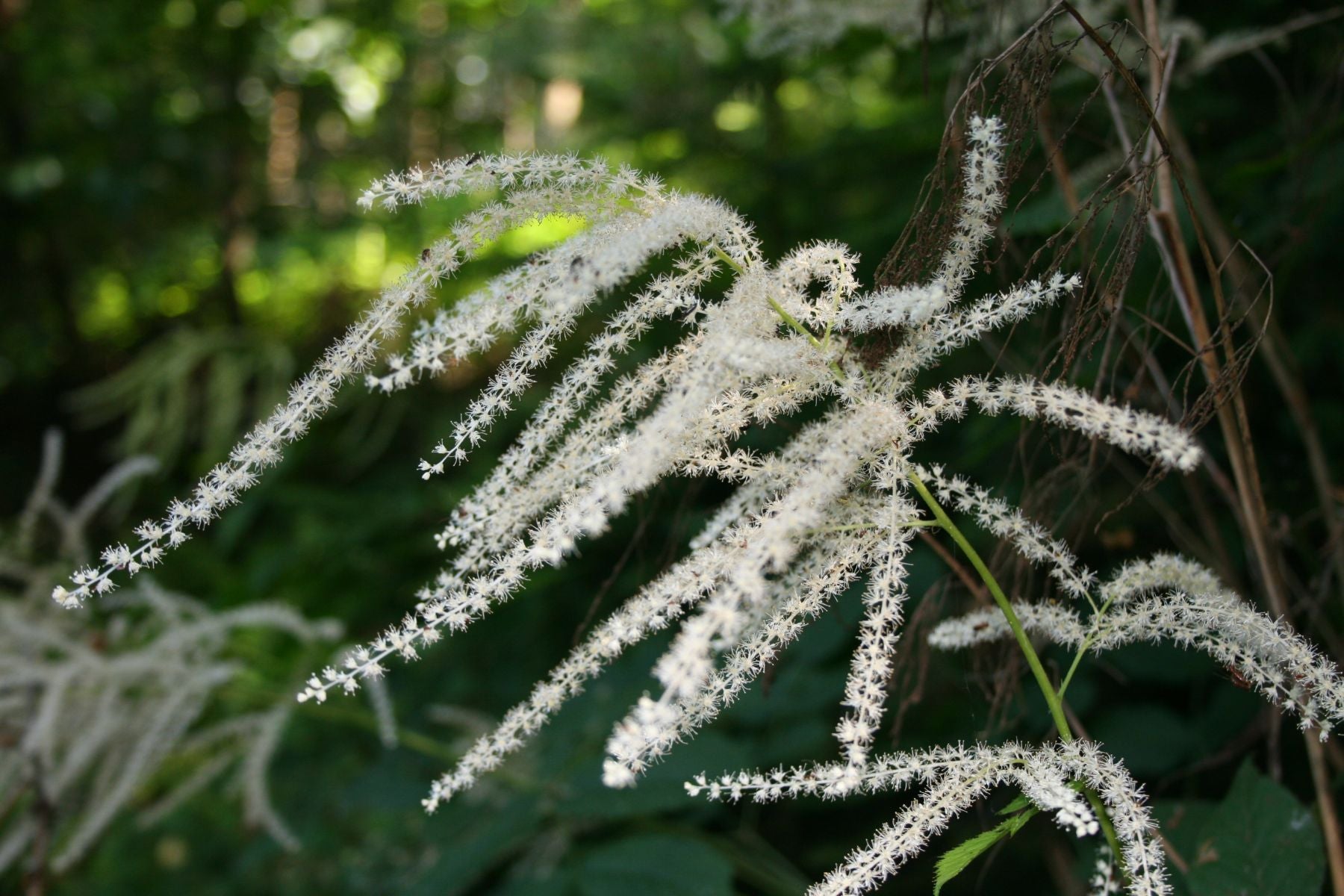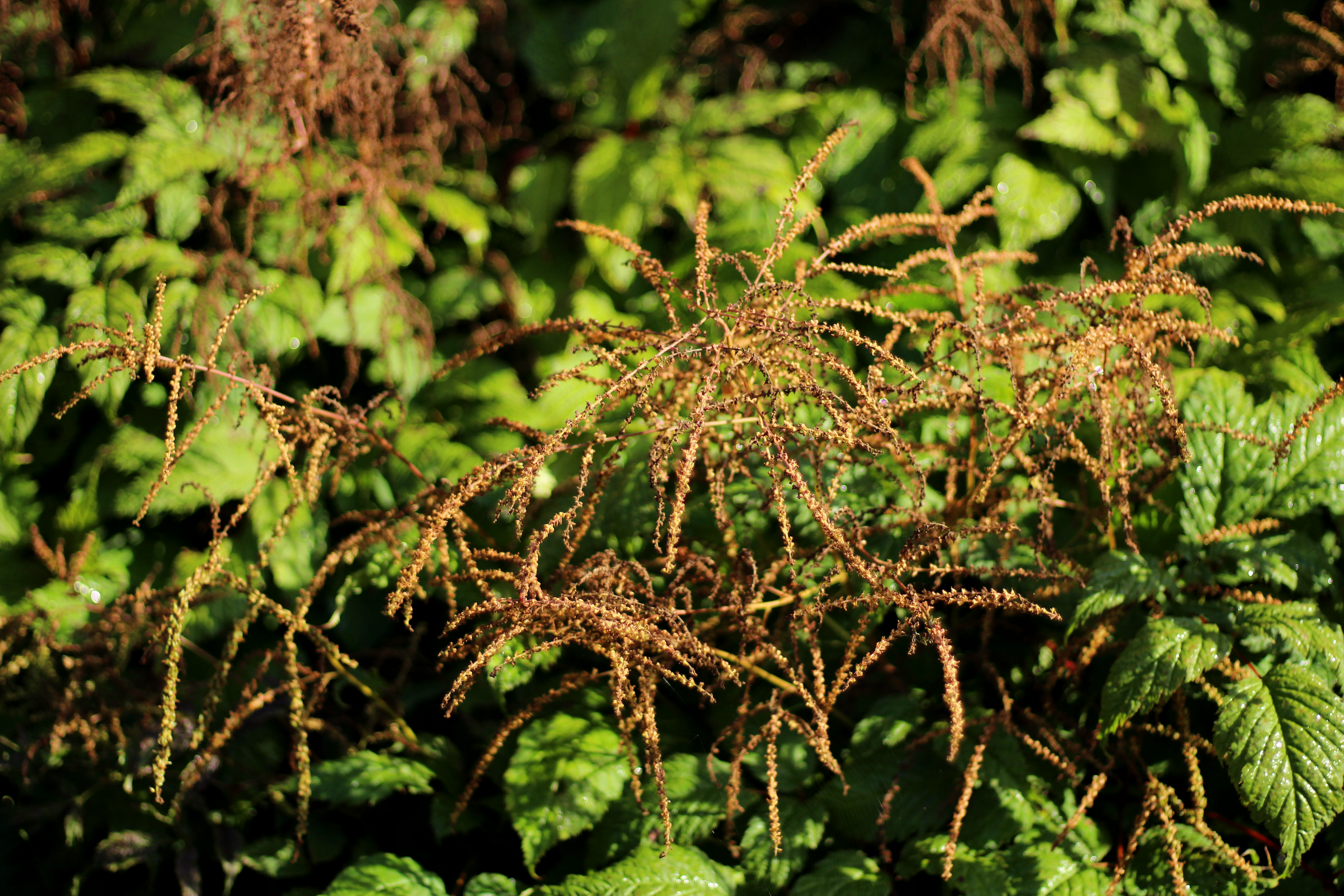Aruncus dioicus (m)
Approx. 0.5 litre pot
About this cultivar:
Aruncus dioicus, commonly called goat's beard, or by its synonyms Aruncus plumosus or Aruncus sylvestris, is a Missouri native plant which occurs in moist woodlands and along bluffs in the central and southeast part of the American State.
This one always has people asking about it when the see it in the garden, I am surprised it is not more popular. I think of it as a giant, whispy, Astilbe. Lovely dried seed heads over winter. A tall, erect, bushy, clump-forming plant which features pinnately compound, dark green foliage and showy, plume-like spikes of tiny, cream coloured flowers which rise well above the foliage in early to mid summer, creating a bold effect.
Dioecious (separate male and female plants) as the species name suggests. Plants with male flowers (numerous stamens per flower) produce a showier bloom than plants with female flowers (three pistils per flower).
Has the Royal Horticultural Society Award of Garden Merit (RHS AGM)
- Position: Full sun, partial shade, full shade
- Soil: Almost any soil,
-
Flowers: June, July, August - ornamental effect of the dried seed plumes afterwards
- Other features: Royal Horticultural Society Award of Garden Merit (RHS AGM, waterlogged, woodland
- Hardiness: H6 - Hardy in all of UK and northern Europe (-20 to -15°C), Fully hardy
- Habit: Clump forming
- Foliage: Deciduous
- Height: 120 to 180 cm (4 - 6 ft)
- Spread: 60 to 120 cm (2 - 4 ft)
- Time to full growth: 2 to 5 years
- Plant type: Herbaceous Perennial, Woodland Plant
- Colour: White, green
- Goes well with: Carex, Hostas, Astilbes
About this genus:
Aruncus is a genus of clump forming herbaceous perennial plants in the Rose family (Rosaceae). They are closely related to the genera Filipendula and Spiraea, and are native to mountainous damp woodland in temperate regions of the Northern Hemisphere. The genus name is the classical Greek name for these plants.
The botanical opinion of the number of species differs, with from one to four species accepted. Aruncus dioicus (goatsbeard) occurs throughout the cooler parts of Europe, Asia and North America. In the broad sense, this is the only species in the genus, with the other species (aethusifolius, gombalanus, sylvester) treated as synonyms or varieties of it by some botanists.
Aruncus blooms in spring and summer with large clusters of tiny creamy white flowers in a feather-like inflorescence produced above veined and toothed leaflets. The flowers also make long-lasting cut flowers and dry well for arrangements. Many people compare Aruncus to the more colourful Astilbe as the two share a similar appearance and habitat. I find Aruncus plants have a finer, wispy texture that moves more in the breeze, giving a wilder feel.
Aruncus will grow almost anywhere that isn’t baked dry by sun. As its native habitat implies it does well in wet areas and pnat combinations that reflect that always look well – try Carex, Hostas, or even Astilbes.




















